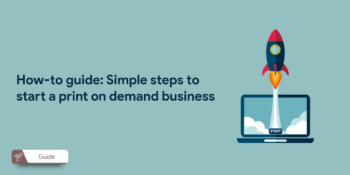Did you know that without a consistent amount of search traffic coming to your store, your business isn’t going to last long? and Ecommerce strategies of SEO could be a factor?
Here’s the thing.
If you have limited search engine traffic, you’re going to have very few visitors which can mean little to no sales.
You need to get potential buyers to go to your Ecommerce store if you want to stay in business. It takes a lot of work to drive traffic to your site and stand out on Google. But it is the path to making the most profit.
To help you get started, I’ll go through the 4 components of Ecommerce SEO so you can learn how to grow your website’s traffic and revenues in the long run.
Let’s go!
SEO Audits
While it’s tempting to jump straight into eCommerce SEO strategies, you need to take care of your SEO foundations first. Auditing your site can help you identify any existing on-site problems that may be hurting your SEO ranks.
Most Common Site Problems
Common eCommerce SEO problems include having:
- Indexing issues (difficult for Google to crawl the site)
- Duplicate content
- Limited content
- Technical issues (e.g. cannibalization or poor site structure)
If you want to find out whether your Ecommerce store has any of these common problems, you can run your website through an SEO auditing tool.
Ecommerce SEO Auditing Tool
Screaming Frog SEO Spider is a highly recommended option that allows you to audit both technical and onsite SEO. Best of all, there’s a free plan that allows you to crawl 500 URLs for free.
Keyword Research
Keywords are a vital component of Ecommerce on-page SEO because they’re responsible for bringing qualified organic search traffic to your site. Below are 4 factors to take into account when it comes to selecting the right keywords.
4 Elements Your Keywords Must Have
- Search Volume
If no one searches for your keyword, you won’t make any sales. You should always go for keywords with a decent level of search volume traffic. To determine what volume you need to be aiming for, you need to take a look at other high-traffic keywords.
- Intent
Your goal should be to attract prospects at the purchasing phase of the sales funnel.
While there are fewer people at the bottom of the funnel, these prospects have a higher conversion rate because they’re more ready to buy. Since these prospects are looking for the best place to buy, they often use keywords like a discount, deal, buy now, or free shipping.
- Relevance
You also need to make sure your keywords are relevant to your store’s offering. The more relevant the words, the higher your conversion rates. If you don’t know whether the word is relevant, look at the pages in the top 10 organic positions for that keyword. If they’re similar to yours, there’s a good chance the word is relevant to your store.
- Competition
You should also select keywords you can realistically rank for. I recommend going for long-tail, lower competition search terms first.
Keyword Research Tools
The best tools to help you with keyword research are Ahrefs, SEMRush, or my free keyword research template tool. Ahrefs and SEMRush are both all-in-one SEO tools that have a keyword research feature, while my research template can help you analyze and steal your competitors’ best keywords.
On-Page SEO
Optimizing your Ecommerce site’s on-page SEO is a bit different from optimizing a traditional site. Below I’ll show you how to carry out Ecommerce SEO effectively.
Ecommerce On-Page SEO Checklist
Here’s a quick checklist of all the factors you need to think about when it comes to on-page SEO:
- Title Tags: Include a target keyword in the title tag and preferably at the beginning where possible.
- Meta Descriptions: A great opportunity to sprinkle your main keywords and any additional LSI keywords.
- Headings and Subheadings: Use the product name as the heading to avoid cannibalization issues and add subheadings to help the search engine crawlers understand your product.
- Images: Use descriptive filenames and add relevant keywords to your alt-tags. Reduce the image size for faster load times.
- Schema Data: Integrate microdata and rich snippets so that your products stand out from the rest in the search results.
- Internal Links: Add internal links via product recommendations to encourage upsells, conversion rates, and a lower bounce rate.
Link Building
The higher the number of QUALITY links you have pointing to your products, the more you can boost your SEO rankings. Below are 2 strategies to help you build natural-looking backlinks just to get you started.
Infographic Creation and Distribution
Infographics tend to attract links organically and will continue gaining backlink momentum the more people share them.
You’ll need to:
- Design an infographic around your niche
- Post the infographic on your site
- Reach out to sites that write about your infographic’s topic
If you don’t have a design team and need help to get started, you can find a designer on Upwork or Fiverr. Alternatively, you can use Canva to design it yourself if you are confident in your graphic design skills.
Get Listed On Resource Pages
Many websites have a resources page where they list different tools and guides that are useful to their target audience.
To get listed:
- Find resources pages in your niche
- Reach out to them asking for a link to your page and explain why your content is worthy of making their list.
It’s best to offer useful evergreen content in exchange for a backlink.
If you’re interested in more backlinking strategies, read my Ultimate Guide To Ecommerce SEO to know bout
Conclusion
If you want to drive potential buyers to your site, start investing in your Ecommerce SEO.
But before starting anything else…make sure you carry out a full website audit.
Build solid strategies of SEO with a foundation first or else you’ll be wasting a lot of time and money, optimizing your site with limited results.
What are you waiting for?
Audit your site today!
Already a WooCommerce store owner? Build a Mobile App to Win More Customers
Appmaker specialises in Quality and Performance guaranteed, E-Commerce Android/iOS Apps for E-Commerce Businesses. Get in touch









No Comments
Leave a comment Cancel